Youth Care Treatment Center and school has helped teens with prescription painkiller addiction all over the United States for 30 years. Our unique approach is based off of solid morals and beliefs to help adolescents be successful in turning their lives around.
Understanding Prescription Painkiller Addiction
Learn about prescription painkiller addiction and substance abuse
Prescription painkillers have added immensely to the quality of lives of those who have struggled with acute or chronic physical pain. However, these medications can be dangerous. Regardless of whether they are consumed under the care of qualified healthcare providers, abused in an attempt at self-medication, or taken recreationally, prescription painkillers can lead to the development of an addiction. Many of the most commonly prescribed painkillers, such as OxyContin, Demerol, Percocet, and Vicodin, all contain opioids, which is a very addictive category of drugs that also include heroin.
This does not mean that consuming a painkiller that a physician has prescribed is the same as consuming heroin. These medications can be highly beneficial, and the risks are much less when they are taken as recommended. However, the danger of developing an opioid use disorder is very real, and the risk is heightened significantly when these drugs are consumed without the appropriate medical supervision.
Oxycodone, meperidine (Demerol), and hydrocodone (Vicodin), are all synthetic or semisynthetic opioids, which means they are developed in a laboratory, but are similar in structure with naturally occurring extracts that come from the opium poppy plant. These medications also possess similar properties like bringing on a sense of euphoria, relieving pain, and presenting the risk that individuals will develop an opioid use disorder. As time goes on, those who consume prescription painkillers that contain opioids can become tolerant. Tolerance is a sign of dependence, as is the presence of upsetting withdrawal symptoms when an individual attempts to stop using the drug or dramatically decreases the amount that he or she has been consuming.
The need to experience pleasing effects of an opioid-based painkiller while avoiding the pain of withdrawal can cause an individual to stay stuck within what might feel like an ongoing pattern of substance abuse. It can be very challenging for an individual to end his or her dependence on opioids without effective treatment. When comprehensive care is received, an individual can rid his or her body of opioids in a secure and more comfortable manner, and can then finish the therapeutic programming that will allow him or her to prevent relapse and live a happy, healthy life that is free from the compulsion to abuse prescription painkillers.
Statistics
Prescription painkiller addiction statistics
According to the National Institute on Drug Abuse (NIDA), more than 52 million Americans have used prescription drugs for non-medicinal purposes at least once in their lives, and six million have done so over the past 30 days. The U.S. Centers for Disease Control and Prevention (CDC) report that opioid-based prescription medications make up nearly 44 overdose deaths every day in America, a daily number that includes about 18 women and 26 men. Over 16,000 people in 2013 died from prescription opioid overdoses, and before that, in 2011, prescription painkillers led to more than 420,000 emergency room visits.
Causes and Risk Factors
Causes and risk factors for prescription painkiller addiction
The abuse of prescription painkillers and the development of opioid use disorder might be affected by a series of factors, such as the following:
Genetic: Extensive research shows the presence of a genetic impact on the development of chemical dependency. For instance, a genetic disposition to a novelty seeking or having an impulsive personality might also place an individual at a greater risk for abusing these medications or other substances. Studies that included adopted children and twins have also shown that having a biological parent with a substance use disorder increases the risk that the individual will experience similar issues.
Environmental: Someone who has suffered child abuse or other types of childhood adversity will be at a heightened risk for participating in substance abuse, as well an individual who struggles with high levels of stress that surpass his or her coping abilities. Specific to prescription drug abuse, suffering an accident or an injury that needs treatment that includes prescription painkillers can be an environmental risk factor for developing opioid use disorder.
Risk Factors:
- Experiencing severe acute or chronic pain
- Prior substance abuse
- Experiencing trauma
- Poor coping skills
- Family history of substance use disorders
- Stress
- Easy access to prescription pain medications
Signs and Symptoms
Signs and symptoms of prescription painkiller addiction
Below are some of the most common symptoms and signs that might indicate that an individual has been abusing opioid-based painkillers:
Behavioral symptoms:
- Diminished participation in significant activities
- Using painkillers when it is unsafe to do so
- Slurring speech
- Visiting multiple doctors to get prescriptions for painkillers
- Borrowing or stealing medication that has been prescribed to someone else
- Social withdrawal and isolation
- Deception regarding whereabouts and/or activities
- Being unable to decrease one’s use of painkillers
Physical symptoms:
- Impaired coordination
- Itchiness
- Pupil dilation
- Heavy perspiration
- Decreased blood pressure
- Constipation
- Disrupted sleep patterns
Cognitive symptoms:
- Confusion
- Disorientation
- Poor decision-making skills
Psychosocial symptoms:
- Irritability
- Depression
- Drastic changes in mood
Effects
Effects of prescription painkiller addiction
Opioid use disorder that includes prescription painkillers can have a significant impact on one’s physical, psychological, and social wellbeing, and can cause the following negative consequences:
- Social isolation
- Development of physical health problems
- Impaired or destroyed interpersonal relationships
- Family discord, including separation and divorce
- Job loss and chronic unemployment
- Financial distress
- Legal problems, including arrest and incarceration
- Homelessness
- Suicidal ideation
- Suicide attempt or attempts
- Overdose, which can lead to death
Co-Occurring Disorders
Prescription painkiller addiction and co-occurring disorders
Someone who has become dependent on prescription painkillers might also be struggling with a co-occurring mental health problem. The disorders listed below are some of the most commonly diagnosed in those who have developed opioid use disorder:
- Other substance use disorders
- Posttraumatic stress disorder (PTSD)
- Major depressive disorder
- Persistent depressive disorder
Effects of Withdrawal and Overdose
Prescription painkiller withdrawal and overdose
Effects of prescription painkiller withdrawal: Ending or dramatically decreasing one’s use of prescription painkillers after developing a dependency on them can lead to a number of upsetting withdrawal symptoms, including:
- Fever
- Loss of appetite
- Pain in bones and muscles
- Nausea, vomiting, and diarrhea
- Inability to sleep
- Dysphoria
- Watery eyes and runny nose
- Heavy perspiration
- Tremors and twitches
- Powerful cravings for opioids
- Irritability and agitation
Effects of prescription painkiller overdose: Opioids interact with parts of the brain that also impact involuntary processes including respiration and heart rate. Therefore, overdosing can put an individual in extreme danger. Anyone who shows the following symptoms after consuming a prescription painkiller might require immediate medical care:
- Breathing problems
- Slow or otherwise irregular pulse
- Extreme disorientation
- Pinpoint pupils
- Seizure
- Loss of consciousness








